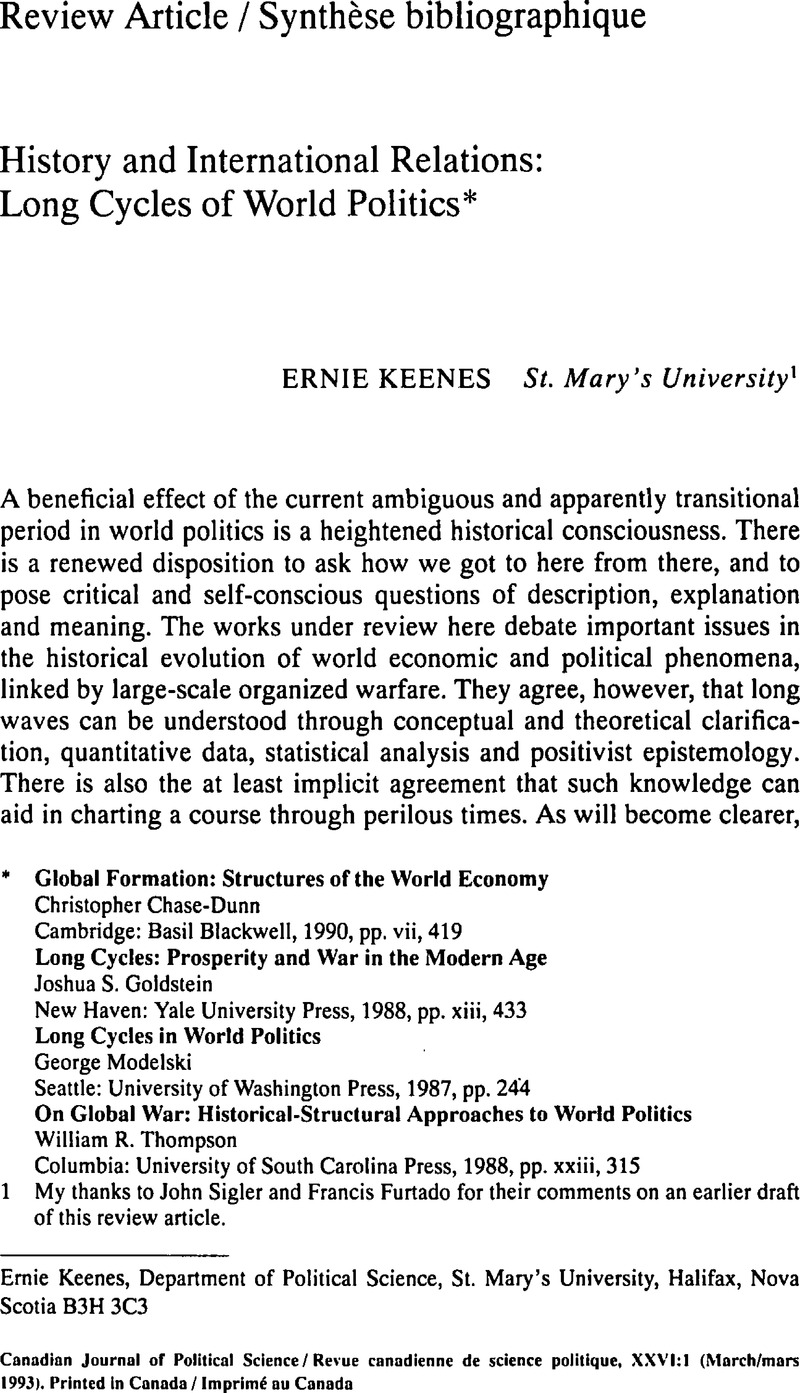No CrossRef data available.
Article contents
History and International Relations: Long Cycles of World Politics*
Published online by Cambridge University Press: 10 November 2009
Abstract

- Type
- Review Article/Synthèse Bibliographique
- Information
- Canadian Journal of Political Science/Revue canadienne de science politique , Volume 26 , Issue 1 , March 1993 , pp. 145 - 154
- Copyright
- Copyright © Canadian Political Science Association (l'Association canadienne de science politique) and/et la Société québécoise de science politique 1993
References
2 Wendt, Alexander, “The Agent-Structure Problem in International Relations Theory,” International Organization 41 (1987), 335–70.CrossRefGoogle Scholar
3 Boli, John, “The Contradictions of Welfare Capitalism in the Core,” in McGowan, Pat and Kegley, Charles W. Jr., eds., Foreign Policy and the Modern World System (Beverly Hills: Sage, 1983), 187–223Google Scholar; and Resnick, Philip, “From Semi-Periphery to Perimeter of the Core: Canada in the Capitalist World Economy,” chapter 9 in his The Masks of Proteus: Canadian Reflections on the State (Montreal: McGill-Queen's University Press, 1990), 179–204Google Scholar.
4 Grunberg, Isabelle, “Exploring the ‘Myth’ of Hegemonic Stability,” International Organization 44 (1990), 447.CrossRefGoogle Scholar
5 Eco, Umberto, The Name of the Rose (New York: Warner, 1984), 599Google Scholar. This novel is, among other things, a fascinating account of pre-Westphalian world politics, and of knowing about world politics.


